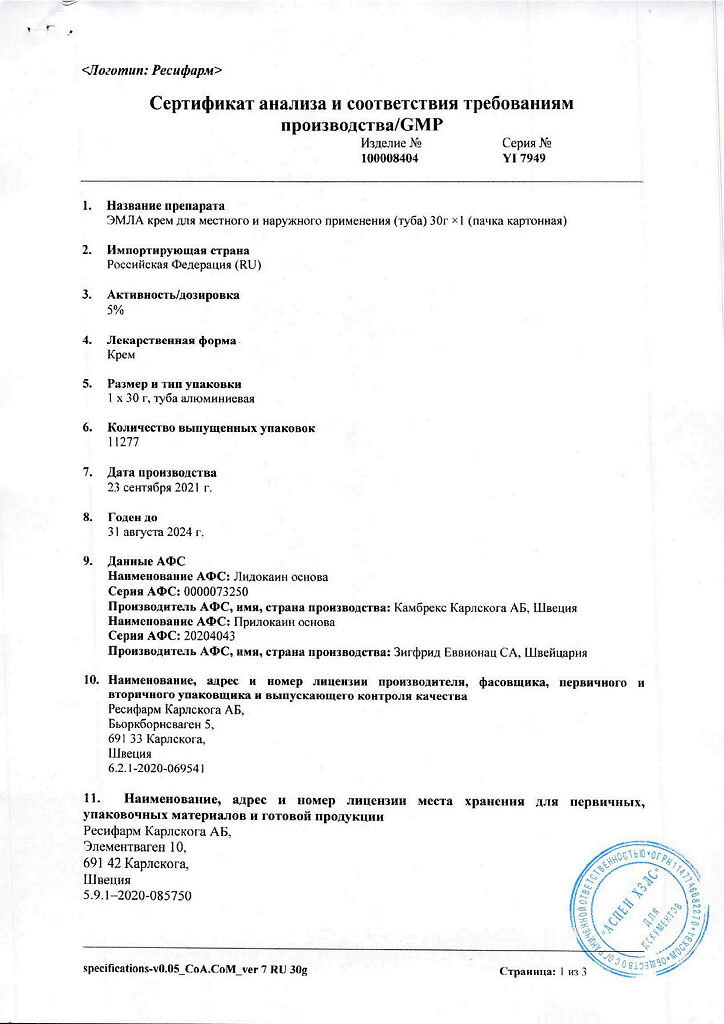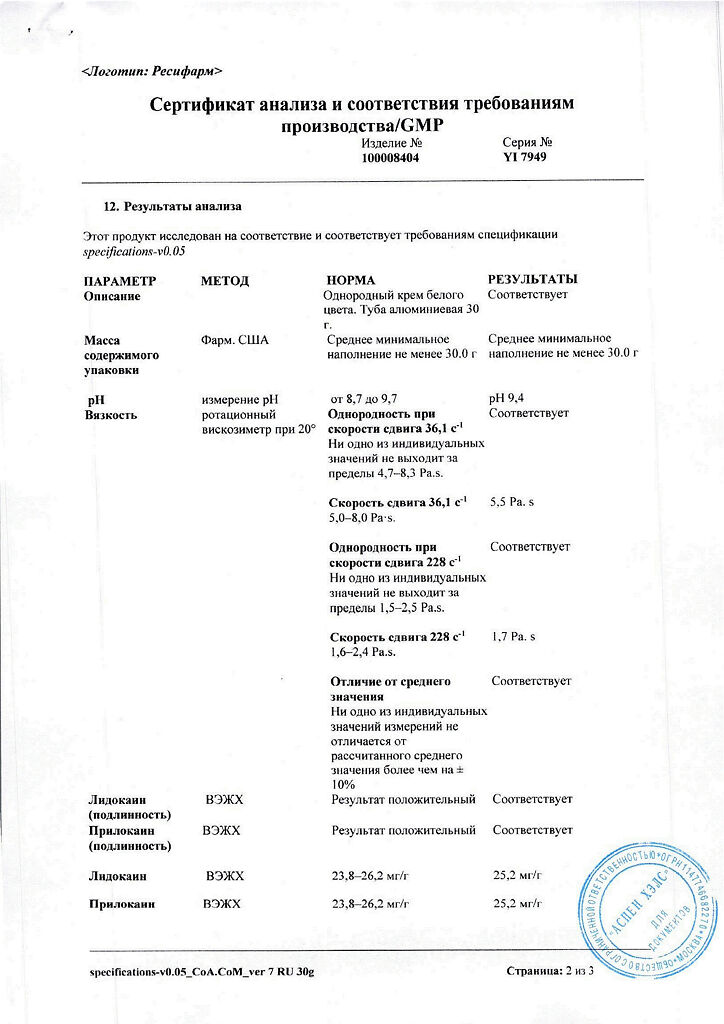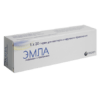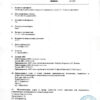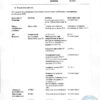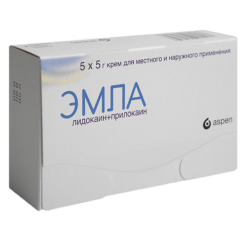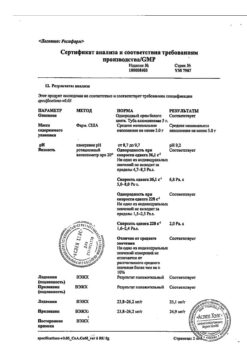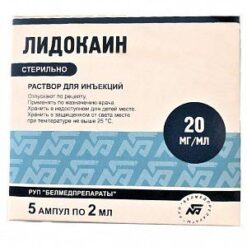No products in the cart.
Emla, cream 30 g
€57.55 €47.96
EAN: 4607155430124
SKU: 105056
Categories: Anesthesia and resuscitation, Local anesthetics, Medicine
Description
Pharmacotherapeutic group:A local anesthetic
ATX code: N01BB20
Pharmacodynamics
EMLA cream contains as active ingredients lidocaine and prilocaine, which are local anesthetic amide type. Anesthesia of the skin is caused by the penetration of lidocaine and prilocaine into the layers of the epidermis and dermis. The degree of anesthesia depends on the dose of the drug and the duration of application.
intact skin
After applying EMLA cream to intact skin for 1-2 hours, the duration of anesthesia after removing the occlusive dressing is 2 hours. No differences in efficacy (including time of achieving anesthetic effect) and safety were found when applying the cream to intact skin between elderly (65-96 years) and younger patients.
Due to the action of EMLA cream on the surface vessels, temporary paling or reddening of the skin is possible. Such reactions in patients with widespread neurodermatitis (atopic dermatitis) may occur more quickly, 30-60 minutes after application of the cream, indicating faster penetration of the cream through the skin.
In case of puncture biopsy (4 mm in diameter) the use of EMLA cream provides adequate anesthesia of the intact skin in 90% of patients in 60 minutes after applying the cream in case of needle insertion to a depth of 2 mm, and in 120 minutes after the needle insertion to a depth of 3 mm. The efficiency of EMLA cream does not depend on skin color or pigmentation (skin type I-IV).
When using combined vaccines against such infections as measles, rubella, mumps, or intramuscular combined vaccines against diphtheria, pertussis, tetanus, polio and infection caused by Haemophilius influenzae type b, as well as during vaccination against hepatitis B, the use of EMLA cream had no effect on the average antibody titer, the rate of appearance or disappearance of specific antibodies in the blood serum or the number of patients who reached a protective or positive antibody titer after immunization.
Genital mucosa
Anesthesia of the genital mucosa is achieved faster compared to anesthesia of intact skin due to faster absorption of the drug.
In women 5-10 minutes after applying EMLA cream to the genital mucosa anesthesia is achieved sufficient to relieve pain caused by the use of an argon laser; anesthesia lasts 15-20 minutes (taking into account individual characteristics from 5 to 45 minutes).
Trophic ulcers of the lower extremities
After the application of the cream in the treatment of trophic ulcers of the lower extremities the duration of anesthesia is up to 4 hours. No negative effect of the drug on the healing process of ulcers or with respect to bacterial flora was noted.
Pharmacokinetics
Systemic absorption of EMLA cream depends on the dose, duration of application and thickness of the skin (depending on body area) as well as other skin conditions such as skin diseases and shaving. When applied to the ulcerous surface of the lower extremities, the absorption of the drug may be affected by features of the ulcers, such as the size (absorption increases with increasing area of the ulcer).
Intact skin:
In adults, after applying 60 g of cream to 400 cm2 (1.5 g per 10 cm2) intact thigh skin for 3 hours, systemic absorption for lidocaine was approximately 3% and for prilocaine 5%. Absorption was slow. Maximum plasma concentrations of lidocaine (mean 0.12 µg/ml) and prilocaine (mean 0.07 µg/ml) were reached approximately 4 hours after application of the cream. There is a risk of toxic symptoms only at plasma concentrations of the active substances of 5-10 µg/ml. When EMLA cream is applied to intact skin 8-12 hours after shaving, the maximum plasma concentrations of lidocaine and prilocaine in both young and elderly patients are very low and well below possible toxic levels.
Trophic ulcers of the lower extremities:
The time to reach maximum plasma concentrations of lidocaine (0.05-0.84 µg/ml) and prilocaine (0.02-0.08 µg/ml) is 1-2.5 hours from application to the ulcerous surface (5-10 g cream for 30 min).
No cumulation in plasma of prilocaine, lidocaine or their metabolites was observed during repeated application of the cream on the ulcerous surface. 2-10 g of EMLA cream was applied to the ulcerous surface up to 62 cm2 for 30-60 minutes from 3 to 7 times a week (15 times during the month).
Genital mucosa:
Time to reach maximum plasma concentrations of lidocaine and prilocaine (0.18 µg/mL and 0.15 µg/mL on average, respectively) is approximately 35 min from application to the vaginal mucosa (10 g cream for 10 min).
Indications
Indications
In adults:
• superficial anesthesia of the skin during injections (including vaccinations), punctures and catheterization of blood vessels and superficial surgical interventions, including minor cosmetic procedures and hair removal;
• superficial anesthesia of trophic ulcers of the lower extremities during surgical treatment (mechanical cleaning), for example, to remove fibrin, pus and necrotic tissue;
• superficial anesthesia of the mucous membrane of the genital organs before painful manipulations and for pain relief before injections of local anesthetics.
In children:
• superficial anesthesia of the skin during injections (including vaccinations), punctures and catheterization of blood vessels and superficial surgical interventions (including removal of molluscum contagiosum).
Pharmacological effect
Pharmacological effect
Pharmacotherapeutic group: local anesthetic
ATX code: N01BB20
Pharmacodynamics
EMLA cream contains lidocaine and prilocaine, which are amide-type local anesthetics, as active ingredients. Skin anesthesia is caused by the penetration of lidocaine and prilocaine into the layers of the epidermis and dermis. The degree of anesthesia depends on the dose of the drug and the duration of application.
Intact skin
After applying EMLA cream to intact skin for 1-2 hours, the duration of anesthesia after removing the occlusive dressing is 2 hours. There were no differences in efficacy (including time to achieve analgesic effect) and safety when applying the cream to intact skin between elderly (65-96 years) and younger patients.
Due to the effect of EMLA cream on superficial vessels, temporary paleness or redness of the skin is possible. Similar reactions in patients with widespread neurodermatitis (atopic dermatitis) may occur faster, within 30-60 minutes after applying the cream, which indicates faster penetration of the cream through the skin.
For puncture biopsy (4 mm in diameter), the use of EMLA cream provides adequate anesthesia of intact skin in 90% of patients 60 minutes after application of the cream when the needle is inserted to a depth of 2 mm and after 120 minutes when the needle is inserted to a depth of 3 mm. The effectiveness of EMLA cream does not depend on skin color or pigmentation (skin types I-IV).
When using combination vaccines against infections such as measles, rubella, mumps, or intramuscular combination vaccines against diphtheria, pertussis, tetanus, polio and infection caused by Haemophilius influenzae type b, as well as vaccination against hepatitis B, the use of EMLA cream did not affect the average antibody titer, the rate of appearance or disappearance of specific antibodies in the blood serum, or the number of patients achieving a protective or positive antibody titer after immunization.
Mucous membrane of the genital organs
Anesthesia of the genital mucosa is achieved faster compared to anesthesia of intact skin due to faster absorption of the drug.
In women, 5-10 minutes after applying EMLA cream to the mucous membrane of the genital organs, anesthesia sufficient to relieve pain caused by the use of an argon laser is achieved; The duration of anesthesia is 15-20 minutes (taking into account individual characteristics from 5 to 45 minutes).
Trophic ulcers of the lower extremities
After applying the cream when treating trophic ulcers of the lower extremities, the duration of pain relief is up to 4 hours. There was no negative effect of the drug on the healing process of ulcers or on bacterial flora.
Pharmacokinetics
Systemic absorption of EMLA cream depends on the dose, duration of application and thickness of the skin (depending on the body area), as well as other skin characteristics such as skin diseases and shaving. When applied to the ulcerative surface of the lower extremities, the absorption of the drug may be influenced by the characteristics of the ulcers, for example, the size (with an increase in the area of the ulcer, absorption increases).
Intact skin:
In adults, after applying 60 g of cream to an area of 400 cm2 of intact thigh skin (1.5 g per 10 cm2) for 3 hours, systemic absorption for lidocaine was approximately 3% and for prilocaine 5%. Absorption is slow. The maximum concentration of lidocaine (average value 0.12 μg/ml) and prilocaine (average value 0.07 μg/ml) in blood plasma was reached approximately 4 hours after application of the cream. The risk of toxic symptoms exists only when the concentration of active substances in the blood plasma is 5-10 mcg/ml. When EMLA cream is applied to intact skin 8-12 hours after shaving, the maximum plasma concentration of lidocaine and prilocaine in both young and elderly patients is very low and well below possible toxic levels.
Trophic ulcers of the lower extremities:
The time to reach the maximum concentration of lidocaine (0.05-0.84 mcg/ml) and prilocaine (0.02-0.08 mcg/ml) in the blood plasma is 1-2.5 hours from the moment the drug is applied to the ulcer surface (5-10 g of cream for 30 minutes).
With repeated application of the cream to the ulcerative surface, there was no accumulation of prilocaine, lidocaine or their metabolites in the blood plasma. 2-10 g of EMLA cream were applied to the ulcer surface with an area of up to 62 cm2 for 30-60 minutes from 3 to 7 times a week (15 times within a month).
Mucous membrane of the genital organs:
The time to reach the maximum concentration of lidocaine and prilocaine in the blood plasma (on average 0.18 μg/ml and 0.15 μg/ml, respectively) is approximately 35 minutes from the moment of application of the drug to the vaginal mucosa (10 g of cream for 10 minutes).
Special instructions
Special instructions
Patients with glucose-6-phosphate dehydrogenase deficiency or hereditary or idiopathic methemoglobinemia are more susceptible to drug-dependent methemoglobinemia.
The effectiveness of using the cream in newborns during the procedure of taking blood samples from the heel has not been established.
Caution should be used when applying EMLA cream around the eyes as the drug causes eye irritation. Elimination of protective reflexes can cause irritation or damage to the cornea. If the cream gets into your eyes, immediately rinse your eyes with water or 0.9% sodium chloride solution and protect your eyes until protective reflexes are restored.
Caution must be exercised when applying the drug to the skin with atopic dermatitis; Application time should be reduced (15-30 minutes).
In children under 3 months of age, the safety and effectiveness of EMLA cream was determined after a single dose. In such children, after applying the cream, a temporary increase in the level of methemoglobin in the blood was often observed, lasting up to 13 hours. However, the observed increase in methemoglobin levels in the blood is probably not clinically significant.
Patients taking class III antiarrhythmic drugs (for example, amiodarone) should be under constant monitoring and ECG control, because Possible effect on cardiac activity.
EMLA cream should not be applied to a damaged eardrum or in other cases of possible penetration of the cream into the middle ear.
Do not apply the cream to open wounds.
Due to the lack of data on the absorption of the drug, it is not recommended to apply the cream to the genital mucosa in children.
Lidocaine and prilocaine in concentrations above 0.5-2% have bactericidal and antiviral properties. In this regard, it is recommended to take special care when applying the cream before subcutaneous administration of a live vaccine (for example, BCG).
Due to the lack of data, the combined use of EMLA cream and drugs that cause methemoglobinemia is not recommended in children aged 0 to 12 months.
Impact on the ability to drive vehicles and operate machinery
Does not affect the ability to drive vehicles and operate machinery.
Active ingredient
Active ingredient
Lidocaine, Prilocaine
Composition
Composition
Composition (per 1 g of cream)
active ingredients: lidocaine 25.0 mg, prilocaine 25.0 mg;
excipients: macrogol glyceryl hydroxystearate (ARLATON 289) 19.0 mg, carbomer 974 P (carboxypolymethylene) 10.0 mg, sodium hydroxide 5.2 mg to bring the pH to 8.7 – 9.7, purified water to 1.0 g.
Pregnancy
Pregnancy
Pregnancy.
There is insufficient data on the use of EMLA cream in pregnant women. Animal studies did not reveal any direct or indirect negative effects of the drug on pregnancy, intrauterine development of the fetus, the process of childbirth or postnatal development. Lidocaine and prilocaine penetrate the placental barrier and can be absorbed into fetal tissues. No specific reproductive effects, such as increased incidence of malformations or other direct or indirect adverse effects on the fetus, have been reported.
Lactation.
Lidocaine and prilocaine are excreted in breast milk in quantities that do not pose a risk to the baby when the drug is used in therapeutic doses.
Contraindications
Contraindications
– hypersensitivity to amide-type local anesthetics or any other component of the drug;
– premature newborns born at a gestational age of less than 37 weeks;
– newborns weighing less than 3 kg.
With caution
Glucose-6-phosphate dehydrogenase deficiency, hereditary or idiopathic methemoglobinemia, common neurodermatitis (atopic dermatitis), patients taking class III antiarrhythmic drugs (for example, amiodarone) (see section “Special Instructions”).
Side Effects
Side Effects
When applied to intact skin
Interaction
Interaction
In patients receiving drugs that induce the development of methemoglobinemia (for example, drugs containing a sulfo group), EMLA cream may help increase the concentration of methemoglobin in the blood.
When treating with other local anesthetics and structurally similar drugs (including tocainide), the risk of increased systemic effects when using high doses of EMLA cream should be taken into account.
No specific studies have been conducted to evaluate the interaction of lidocaine/prilocaine with class III antiarrhythmic drugs; caution should be exercised when using drugs together.
Pharmaceutical interaction: not detected.
Drugs that reduce the clearance of lidocaine (eg, cimetidine or beta-blockers) may cause potentially toxic plasma concentrations when repeated high doses of lidocaine are administered over an extended period of time. This interaction is not clinically significant during short-term therapy with lidocaine (eg, EMLA cream) at recommended doses.
Overdose
Overdose
If the recommended dosage regimen is followed, the development of signs of systemic toxicity is unlikely. Symptoms of intoxication are likely the same as with other local anesthetics, such as central nervous system (CNS) stimulation and, in severe cases, CNS and cardiac depression.
In rare cases, the development of clinically significant methemoglobinemia has been observed. Prilocaine in high doses can cause an increase in methemoglobin levels.
Superficial application of prilocaine 125 mg for 5 hours caused the development of moderate methemoglobinemia in a 3-month-old child. Superficial application of lidocaine at a dose of 8.6-17.2 mg/kg caused serious intoxication in newborns.
Treatment
Severe neurological symptoms (convulsions, depression of the central nervous system) require symptomatic treatment, including the prescription of anticonvulsants and, if necessary, artificial ventilation. In case of development of methemoglobinemia, the antidote is methylthioninium chloride (methylene blue).
Due to the slow systemic absorption of the drug, patients should be monitored for several hours after initiation of treatment for intoxication.
Storage conditions
Storage conditions
Store at temperatures below 300C, out of reach of children. Do not freeze.
Shelf life
Shelf life
3 years. Do not use after the expiration date stated on the package.
Manufacturer
Manufacturer
Recipharm Karlskoga AB, Sweden
Additional information
| Shelf life | 3 years. Do not use after the expiration date stated on the package. |
|---|---|
| Conditions of storage | Store at temperatures below 300C, out of the reach of children. Do not freeze. |
| Manufacturer | Recipharm Karlskoga AB, Sweden |
| Medication form | exterior cream |
| Brand | Recipharm Karlskoga AB |
Other forms…
Related products
Buy Emla, cream 30 g with delivery to USA, UK, Europe and over 120 other countries.


